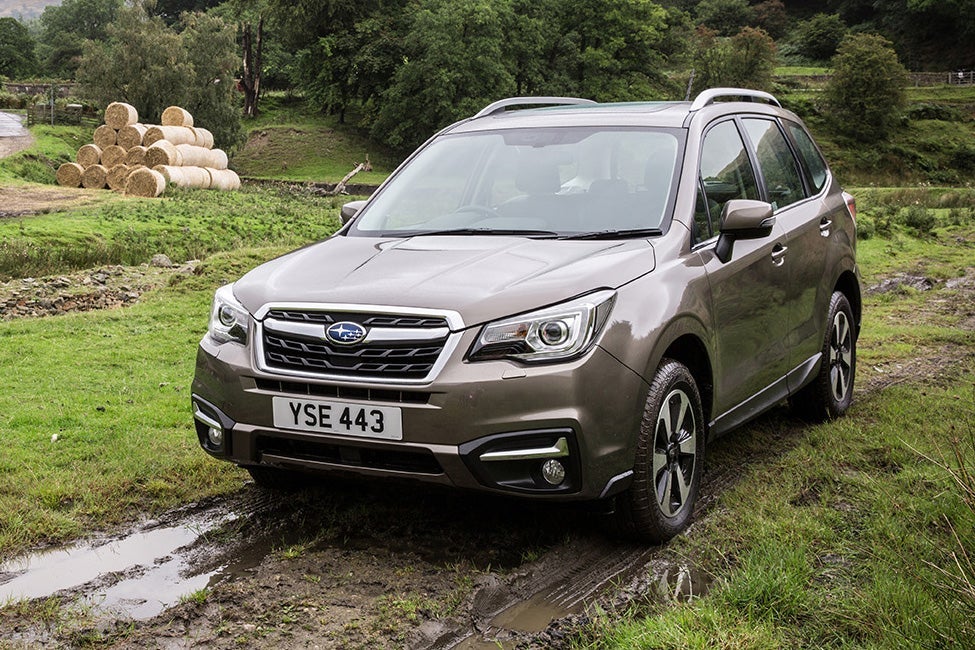Subaru Forester (2013-2019) Review
Written by Andrew Brady
Quick overview
Pros
- Dependable and reliable crossover
- Diesel engine is strong and reasonably economical
- Ideal for rural buyers
Cons
- Feels dated inside with hard plastics
- 2.0i automatic is lethargic and underpowered
- Lacks the refinement of rivals
Overall verdict
"The Subaru Forester has never been a particularly common sight in towns and cities, but head out the countryside and you’ll find an abundance of them. Genuine off-road capability and dependability means that, despite not being very competitively priced, the Forester is popular in rural areas."
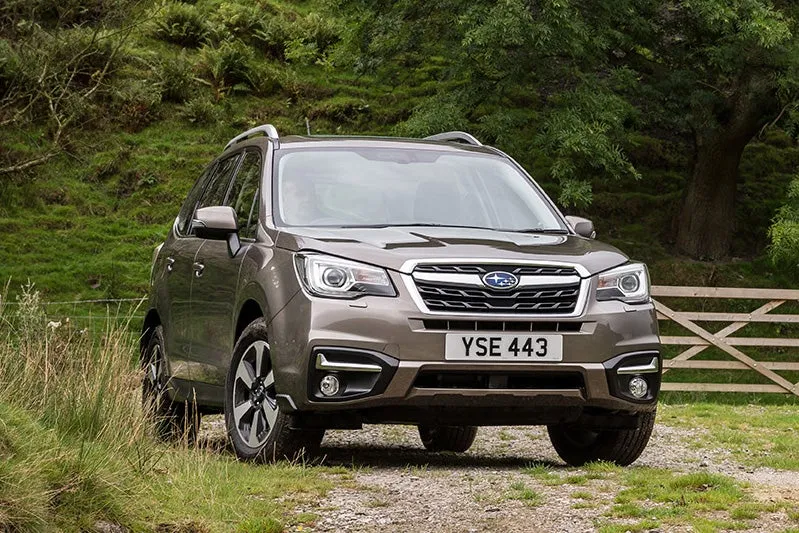
Unfortunately, like all Subarus, it’s not that cheap even as a used buy, while far from efficient engines make it expensive to run. But there’s no denying it’s solidly built and reliable. It's also one of the best 4x4s you can buy for the money.
Surprisingly, the entry point into the range comes with the best engine on offer - the 2.0D diesel with a manual gearbox. It’s a touch noisy but is strong and ideal for a rugged workhorse.
Thankfully it’s good to drive. There’s plenty of torque and a chunky, solid-feeling but precise gear change. Boxer engines, as are fitted to all Subaru Foresters, sit low in the car and so give a low centre of gravity, which makes handling better than other similar sized SUVs like the Honda CR-V.
There’s plenty of equipment, too. All cars get heated seats and heated door mirrors, USB and aux-in, roof rails, air-conditioning, alloy wheels and trailer stability control, as well as the all-important all-wheel drive. Most buyers will go for a mid-range model, which means dual-zone air con, reversing camera and one-touch folding rear seats that are effortless to use.
While the Forester might lag behind its rivals in terms of efficiency, value and quality there is one area in which it excels – it’s a genuinely competent off-roader. We managed to test it on wet fields, through mud and on steep hills and it took nothing less than idiocy to get it stuck, thanks to hill descent control and intelligent traction control.
And that, really, is the Forester's trump card. If you want a chunky, spacious car with SUV looks but you’re a city-dweller then there’s no reason to give the Forester a second look, but if you live in the countryside and you’re often caught out by bad weather, or if you are a land-owner or farmer, then there’s cause to recommend the Forester.
If you're looking for the newer version, you need our Subaru Forester review.
Is the Subaru Forester right for you?
If you want a rugged and dependable workhorse that won’t let you down, a Subaru is a good choice. The Forester may not be especially economical or refined, but it won’t go wrong either. If you live in a rural area and regularly tow, the Forester will tick boxes for you.
What's the best Subaru Forester model/engine to choose?
We think the diesel is the best engine in the Forester range thanks to its strong pulling power and decent economy. The petrol is lethargic and feels underpowered.
What other cars are similar to the Subaru Forester?
There’s no shortage of SUVs this size on the market from the equally dependable Toyota RAV4 to value for money offerings like the SsangYong Tivoli. If it’s off-road ability you want, a Jeep Cherokee or Land Rover Freelander are strong competition. If you don't need the off-road capability, look at a Kia Sportage or Hyundai ix35.
Comfort and design
"The Forester may not be especially modern but it’s very comfortable with excellent visibility in all directions, soft seats, easy access and a commanding driving position."
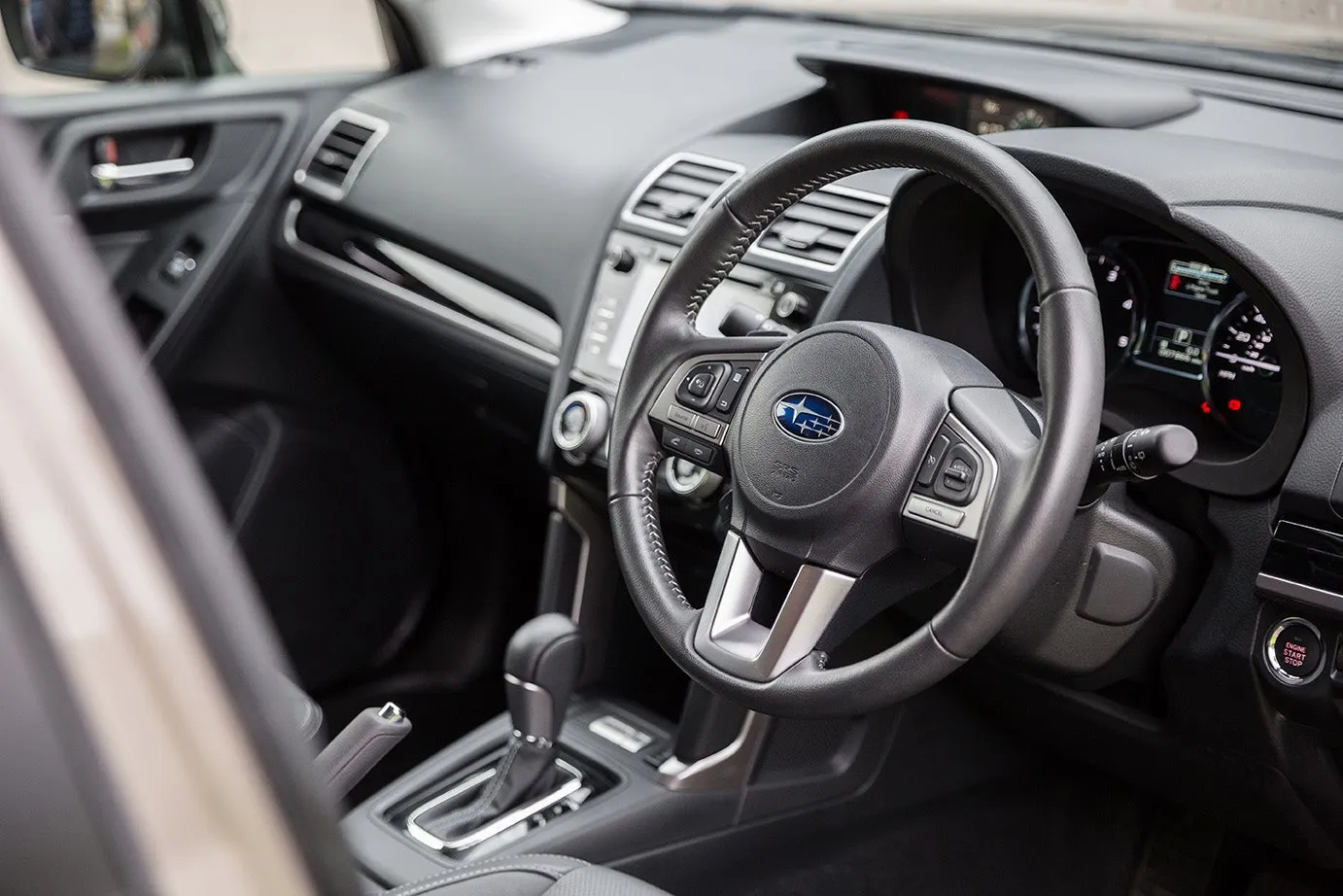
Rear passenger space is good with plenty of head room.
Quality and finish
The cabin of the Forester, regardless of trim level, feels dated. It’s likely to last forever and is certainly well screwed together, but the materials, despite feeling solid and hardwearing, are unpleasant by the standards of European rivals and the layout is both dated and unsophisticated. The Forester’s cabin wouldn’t look out of place in the 1990s. We like the 90s, but not in a car from the 2010s...
Infotainment
Like the rest of the car, the infotainment set-up in the Forester is dated. It does come with a touchscreen as standard and has USB/Bluetooth connectivity for streaming music or making calls, plus there is a standard reversing camera and even heated seats. Higher trim levels gain navigation, a power tailgate and leather upholstery.
Space and practicality
The 505-litre boot is more than capable of carrying luggage, tools or, if you have them, a couple of dogs. However, the load floor is quite high off the ground so lifting heavy or bulky things into it can be tricky.
Folding the rear seats frees up a total of 1593 litres of boot space, but the seat backs don’t fold completely flat, which can make it difficult to slide that flat pack furniture in.
Handling and ride quality
"There’s very little body roll and a feeling of agility that belies the Foresters size. Out on country lanes the Forester diesel is actually quite fun to drive, despite fairly numb steering."
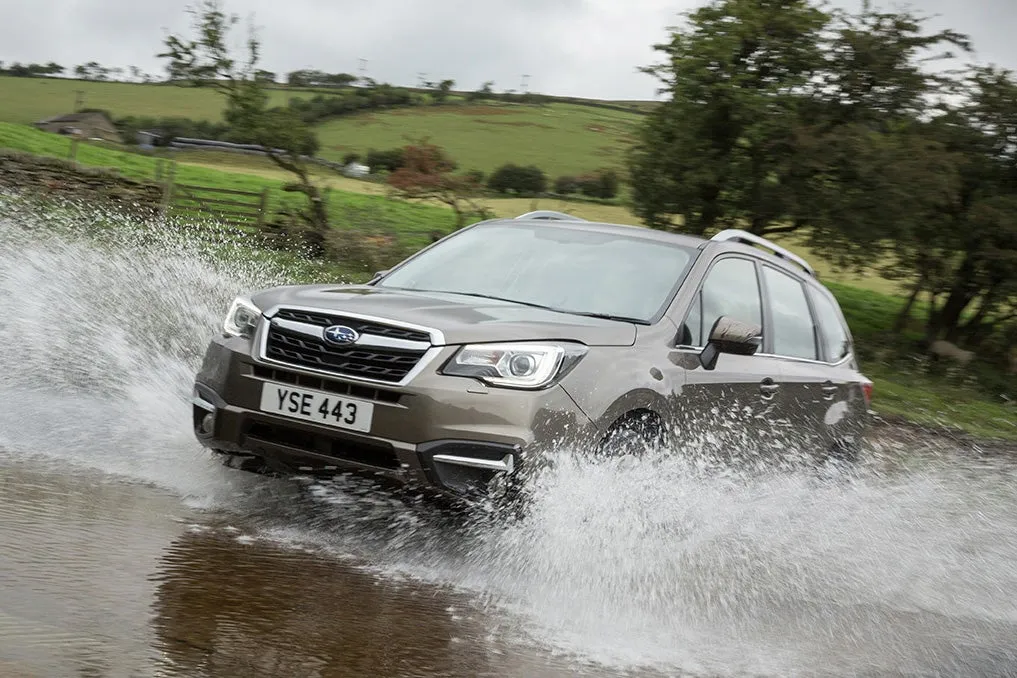
The Forester has a good braked trailer rating of between 1800kg and 2000kg which is enough to tow a medium sized caravan or a small horsebox – but it’s capability is down significantly on something like a SsangYong Rexton, which can tow up to 3500kg.
Engines and gearboxes
There’s the choice of three 2.0-litre horizontally-opposed four-cylinder engines – a 150PS 2.0i petrol engine and a 147PS 2.0D diesel. Plus a 241PS direct injection turbocharged (DIT) petrol unit, engineered for high power, responsiveness and efficiency.
A six-speed manual transmission is fitted as standard to 2.0i and 2.0D models, with an optional Lineartronic CVT automatic transmission. Lineartronic is standard on XT models, equipped with the 241PS DIT petrol engine.
The 150PS petrol engine and CVT automatic gearbox combination is best avoided. It screams under even gentle acceleration and feels lethargic and underpowered, particularly when tasked with overtaking.
Subaru has seen fit to offer the CVT automatic on just petrol models, but while it’s a poor companion to the 150PS engine it works very well indeed with the range-topping - but expensive - 240PS Turbocharged XT model, offering effortless, surging acceleration whether from a standstill or at motorway speeds.
Refinement and noise levels
The diesel engine clatters a little at start up and then settles down when on the move. While it’s a little more gruff than the engines from rivals it suits the rugged nature of the car. But there’s a lot of road noise at motorway speeds and it never feels especially quiet, due to the character of the engines.
Safety equipment
There’s good safety equipment as standard in the Forester range, including twin front, side, curtain and knee airbags, Subaru Vehicle Dynamics Control (VDC - Subaru’s electronic stability control system) with trailer stability, and Subaru’s Symmetrical All-Wheel Drive technology.
MPG fuel costs
"The 2.0D is the most efficient engine in the range with an average claimed economy of 50mpg."
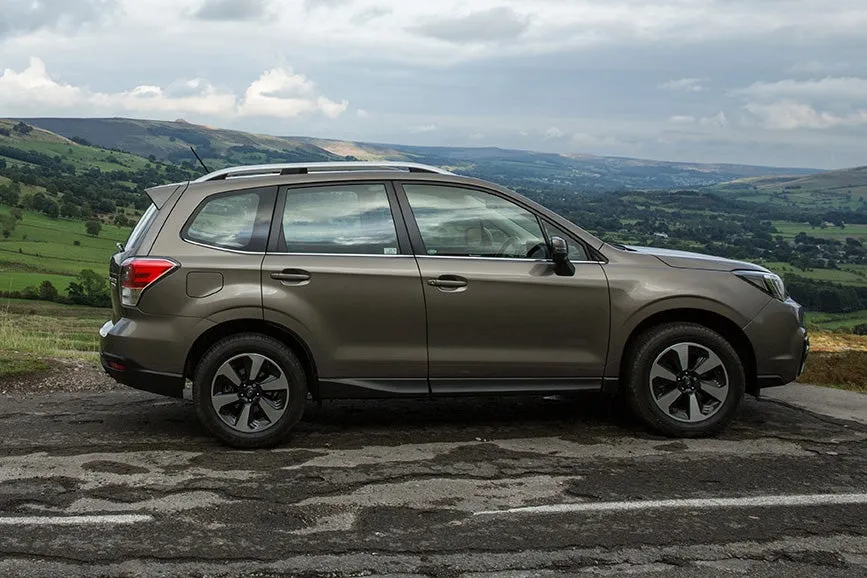
Subaru tends to be one of the most honest manufacturers when it comes to actually getting close to the official numbers achieving that MPG, so you can expect around 48mpg dropping to around 44mpg for the automatic.
Insurance groups and costs
The 2.0i XE Lineartronic and 2.0i XE Premium Lineartronic models are the cheapest to insure at group 16, far lower than the rest of the range. The rest sit in groups 24 and 25 apart from the more powerful 2.0i XT Lineartronic which is group 34.
VED
This generation Subaru Forester was still on sale until 2019 and newer models fall into the current VED system based on a flat rate of tax.
For older cars registered before April 2017, the system is a little more complicated. Based on CO2 emissions it means diesels are usually cheaper to tax. The 2.0D sits in Band F, currently £165 a year while the 2.0i petrol is Band G, so £205 annually for VED.
How much should you be paying?
"Used prices start at around £8000 for this generation Forester which will get you an early model with reasonable miles on the clock."
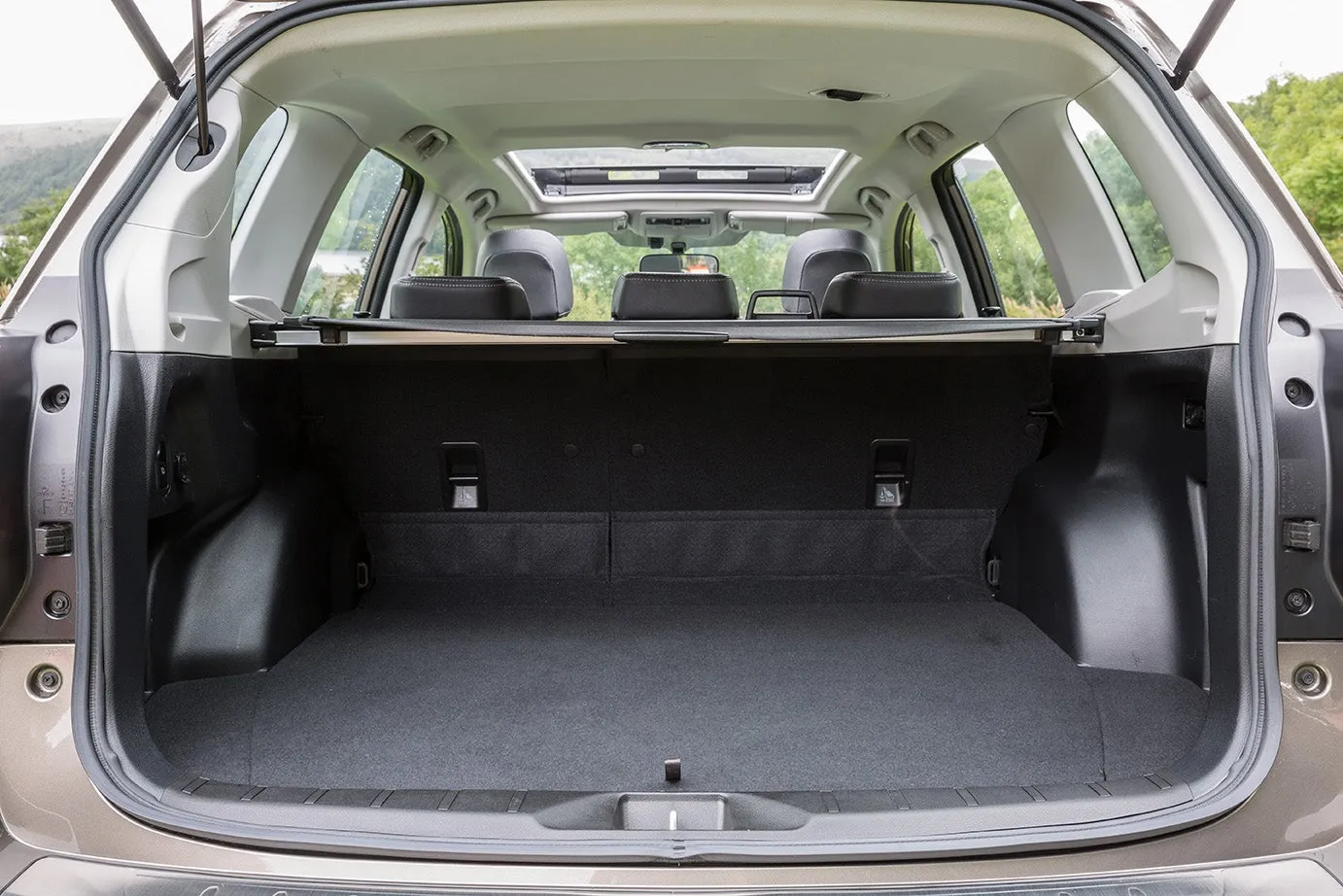
Most are diesels which is by far the best model to go for. Look for XE Premium and XC Premium models which have navigation and leather upholstery. The XT has the 241PS petrol engine with Lineartronic transmission, sports styling along with 18-inch alloy wheels.
Trim levels and standard equipment
XE and XC models come with 17-inch alloy wheels, auto wipers, auto lights, heated door mirrors, dual-zone air conditioning, electric windows, heated power adjustable seats, cruise control, Starlink touchscreen system Bluetooth, USB connectors, reversing camera, roof rails and a roof spoiler.
Get our latest advice, news and offers
Keep me updated by email with the latest advice, news and offers from heycar.
By submitting you agree to our privacy policy
